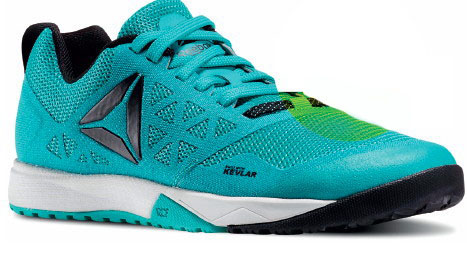Let’s start with the big one. Your profession isn’t exactly a natural fit with a clean and healthy lifestyle…
Ha! People see girls, large crowds, lots of booze and partying… and it’s exactly like that! But you need to have the mental strength to realise that if you keep doing that then you might not live past 35 years old. You have to take that on board and get your training in and sort your diet out, to have longevity in the music industry – and in life.
Is that why you wanted to do a body transformation challenge?
I wanted to lose some belly fat and get my abs to come out! I wanted a more defined chest. It’s pretty hard for me to do that.
I am a big lad, and I can get away with murder. Because I have a big frame, in clothes I do look as though I am ripped. But when my shirt comes off I just look like a big lad! So while my main focus was to lose body fat I wasn’t worried about how much I weighed at the start or how much weight I wanted to lose. I weigh a lot more than most people my height and I wanted to lose fat and get more defined.
What was your training like?
I did a lot of resistance training and a lot of weights-based circuit training. I also used one of those high-altitude training masks. And the beauty is that not only do I look better, I am performing better too – I’ve brought my 5K time down to 23 minutes.
What was the hardest part?
It was a hard road, mainly because when it comes to the diet side, I am terrible.It was a bit like educating a 12-year-old.I had a lot to learn. I have always put on muscle quite easily, so I’ve not had to be too strict with my food intake. The thing is, I can also put fat on quite easily, so that’s a problem. But I think I have one of those bodies where I can store more fat quickly, but I can also lose it quickly too if that’s what I want to do. That means the need for me to find the balance is really important.
How did you manage to stay on track while touring?
The touring schedule was tough. I’d only have a couple of hours in between landing and arriving at venues. That made eating hard. I had to be patient sometimes and hold out until I could find the right place to eat. Being prepared is huge, so I took protein powder with me so I could have a shake if I couldn’t find a good place to eat. But sometimes it doesn’t matter how prepared you are, you will struggle to find healthy food. And that’s when you have to be smart and make the best of whatever situation you’re in.

Rest and recovery is vital to changing your body shape. How did you get enough?
Sleep was massively important. To be honest, I did miss a couple of soundchecks so I could get a bit of sleep. You learn in my industry that you have to sleep when you can. Take advantage of every opportunity to get your head down and don’t try to put it off. So now I am lucky in that I can practically sleep standing up. If I were to do it again I would make sure I got my sleep and research better restaurants so that I had somewhere healthy to eat when I needed to eat.
Were you worried at all that you’d fail?
I can train for days on end – no problem. But I can also go down the pub and drink for days on end – easy. And there’s no point training for days if I am not eating right at the same time. That’s where balance comes in. It was imperative my nutrition was on point. For me, getting my diet right was even more important that the training. If anything I was nervous about peaking too early in the challenge. That might sound strange, but I know how quickly I can lose weight when I want to. And my personality is like that – if I’m doing well and working hard, then my natural instinct is to reward myself. I have had those dips on two or three occasions in the 30-day challenge. Even after ten days I was really pleased with my progress and my first thought was that I deserved to go out on the piss and eat what I wanted. But I knew that if I did I would undo all my hard work overnight and be back to square one.
What’s the right approach if you do slip up?
You have to get back on the horse straight away. As soon as you possibly can. There’s no point dwelling on it. All that does is quickly lead to a spiral. Don’t feel guilty, remember you’ve worked hard, and work hard again from now on. Ultimately, the mental side is crucial to success. There will be lots of dips along the way, because you are tired or whatever, but your muscles will move if your mind tells them to. You need to stay motivated and keep moving.
DJ Locksmith was speaking at the launch of MaxiNutrition’s 30-day Ibiza Challenge. To find out how MaxiNutrition products can power your body transformation, visit maxinutrition.com





